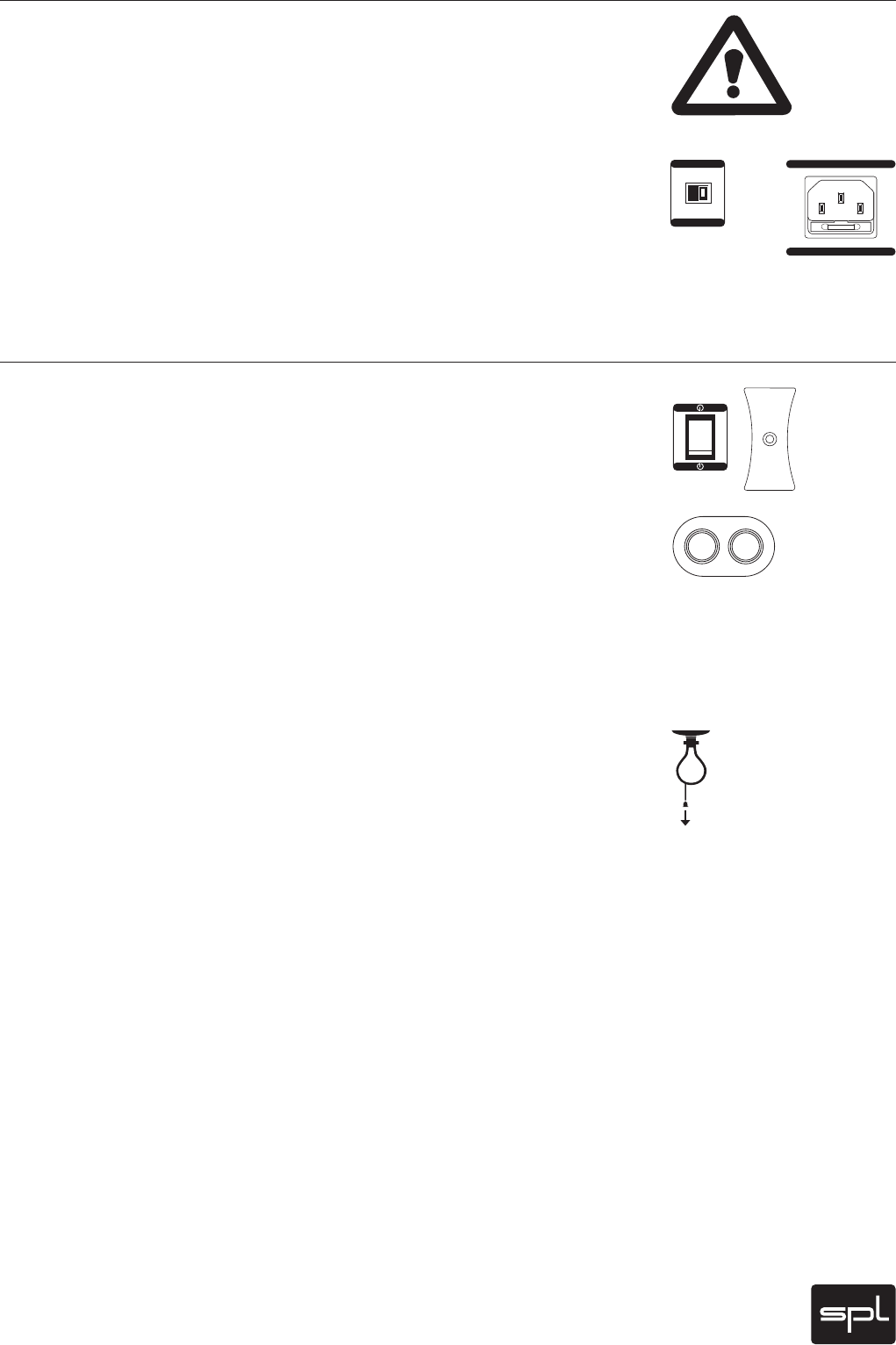
11
Passeq
Power and Signal Connections
Be very careful to check that the rear chassis power selection switch is set to the correct local
line voltage position (either 230 or 115 volts) before using the unit!
Before connecting any equipment make sure that any machine to be connected is turned off
(on the Passeq rear panel the power switch must be pushed down).
An AC power cord is included for connection to the standard 3-prong IEC connector. The trans-
former, power cord and IEC connector are VDE, UL and CSA approved. The AC fuse is rated at
500 mA for 220/240 V and 1 A for 110/120 V.
Power
The Passeq is turned on and off with the rear Power switch. The blue LED in the center of the
front indicates operating status.
Channel Switches
Two illuminated switches in the center of the front activate or bypass the left or right
channel.
Layout of Operational Elements
nitially one might be struck by the circular arrangement of the Passeq’s control elements. As
unusual as this rst appears, the more understandable and clearer this layout becomes when
one looks closer.
Along with the fact that we simply like this design from an aesthetical view, this layout makes
even more sense with respect to the idea of the passive EQ concept itself: In a passive design,
lters for boosting and cutting a frequency range are physically separated from each other.
Reecting this fact, the elements left of the central output control perform level cuts, while
controls to the right of this central regulator serve as signal boost controls. Cut and boost
switches are positioned next to the appropriate frequency band selector and frequency
bands are arranged from low to high from the standpoint of both physical and frequency
range layout—all in all a clear overall functional picture though without much in the way of
boring routine.
The most powerful passive EQ system ever made
The Passeq is the rst passive EQ which provides three separate frequency ranges for both
boost and cut stages. One famous, if not the most famous, passive design was the Pulteq EQ
from the decades of the 1950’s and 60’s. This EQ sported two frequency bands (low and high
frequencies, or LF and HF), and had only a few switchable frequencies to offer. In contrast,
the Passeq has 12 switchable frequencies per band, totaling 36 boost and 36 cut frequencies.
Boost and cut frequencies are NOT identical, thus the resultant 72 frequencies per channel
offer an enormous choice for the most elaborate EQ curves (please refer to the next chapter,
“Frequency Layout”).
The Passeq offers for the rst time passive lter control possibilities extending throughout
the relevant audio frequency range—and that with an unheard of abundance of lter choices.
Connections
7PMUBHF4FMFDUPS
7PMUBHF4FMFDUPS
7°7)[
7°7)[
7°7)[
7°7)[
7
"$.BJOT*OQVU
"$.BJOT*OQVU
1BTTJWF
&RVBMJ[FS
1BTTFR
7(BJO4UBHFT
Operation


















